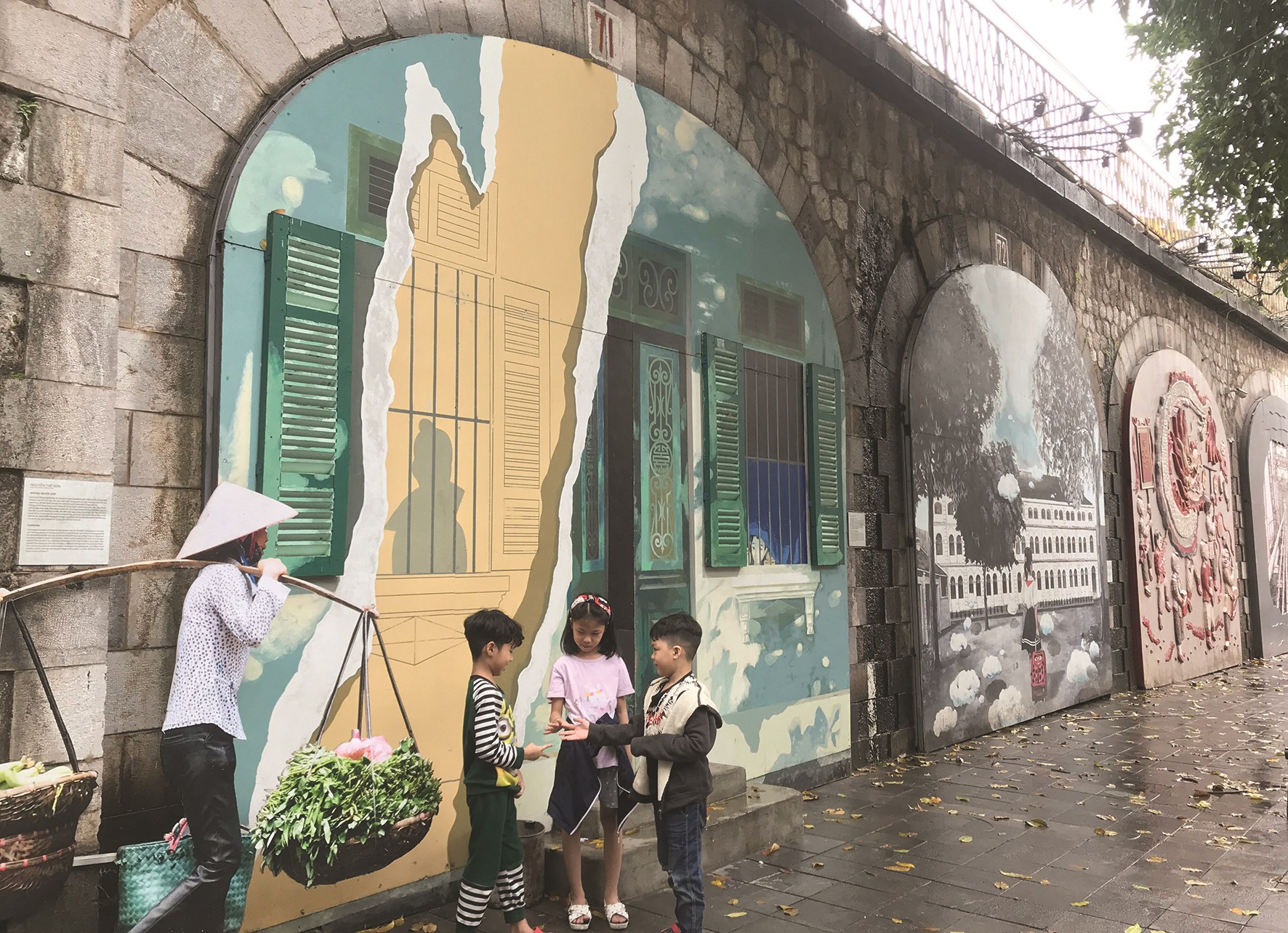This year, Hanoi has stepped up efforts to realize its commitments as a member of UNESCO’s Network of creative cities three years into joining the initiative.

A corner of the Phung Hung mural street. File photo
The goal is for Hanoi to become an innovation hub in the region, with cultural resources and creativity serving as the foundation for the city’s sustainable urban development.
Local authorities plan to carry out a variety of activities in a bid to raise awareness among locals and international partners about Hanoi's initiatives and commitments as a creative city.
In 2022, Hanoi would hold the 2022 Festival of Creative Design; an international conference on “Building a creative design hub – Experience from UNESCO’s creative cities in the region”; a contest on designing public arts in Hanoi; and the “Creative Hanoi” contest.
Among them, the 2022 Festival of Creative Design is scheduled to take place in mid-November with eight activities, including the opening ceremony of the Creative Design Week 2022; the display and introduction of creative handicrafts; activities of ambassadors and international organizations; experiencing creative spaces.
The “Creative Hanoi” contest would be held between 2022 and 2023 and is expected to attract 2,000 students from the Hanoi University of Industrial Fine Art.
Artworks submitted to the contest are under 13 areas including graphic design, interior and exterior design, fashion, industrial design, ceramic, jewelry, lacquer, and sculpture, among others.
The organization board noted the contest would provide students with a platform to work on new ideas based historical and cultural values of Hanoi.
The design contest for public art would help Hanoi turn existing public spaces in the downtown areas into art spaces, added the organization board.
“The contest would help nurture creative design activities among the community, and eventually serve as a bridge to bring creative ideas and practice to the public,” said Pham Thi Lan Anh, head of the Heritage Management Office under the municipal Department of Culture and Sports.
“Another aim is to search for potential investors to realize creative ideas and form creative spaces not only for Hanoi, but the country overall,” Lan Anh added.
Tapping into creative potential among the youth
Throughout the implementation of creative activities, Hanoi looks to promote the participation of the whole society to tap into the creative potential from every walks of life, especially the youth.
Do Dinh Hong, director of the municipal Department of Culture and Sports noted with the participation of young people in creative activities, the city wants to find new and unique ideas for creative spaces and products.
“The discovery of new and creative products would create the driving force for economic development, and contribute to the realization of Hanoi as a creative hub of the region and the world,” noted Hong.
In mid-August, the Department in collaboration with the UNESCO Office in Hanoi jointly held a program titled “dialogue between generations for sustainable development”, in which the youth could demonstrate their creativity and contribute to Hanoi’s action programs as a creative city.
“The youth plays a big part in creativity, innovation, and social advancement. We are looking to see a more active role from the young generation in creative activities of Hanoi, with cultural resources and creativity as the foundation for sustainable urban development,” Hong continued.
Hong also called for participation from both domestic and foreign partners to organize meaningful activities for the development of the city.
|
Hanoi is one of the 66 cities in the world that have been recognized as a creative city by UNESCO. The city was awarded the title in the field of Design on October 30, 2019, having submitted dossiers to join the UNESCO Creative Cities Network four months earlier.
Besides Hanoi, other eleven Asian cities have joined the UNESCO network of creative cities which are Wonju and Jinju (Republic of Korea), Yangzhou and Nanjing (China), Ambon (Indonesia), Asahikawa (Japan), Bangkok and Shukhothai (Thailand), Cebu (the Philippines), Hyderabad and Mumbai (India).
|